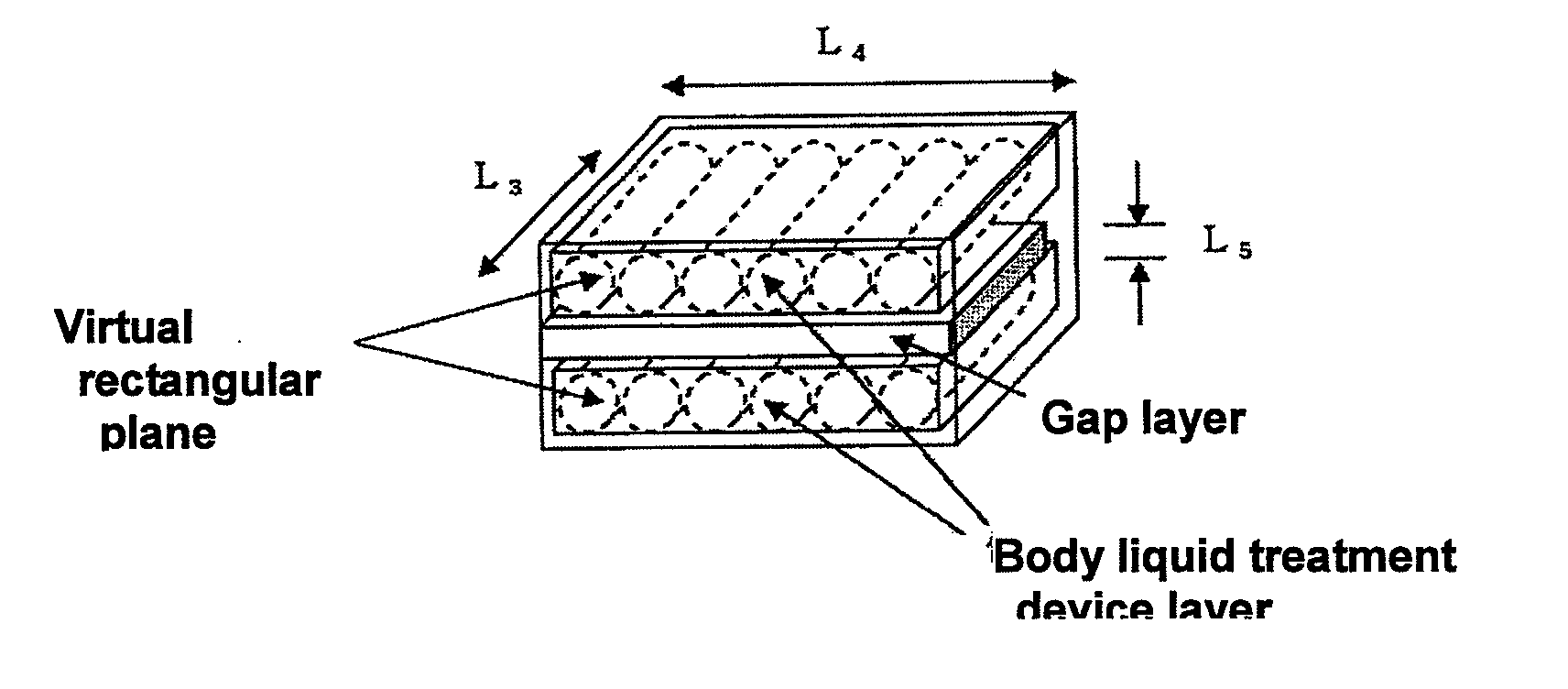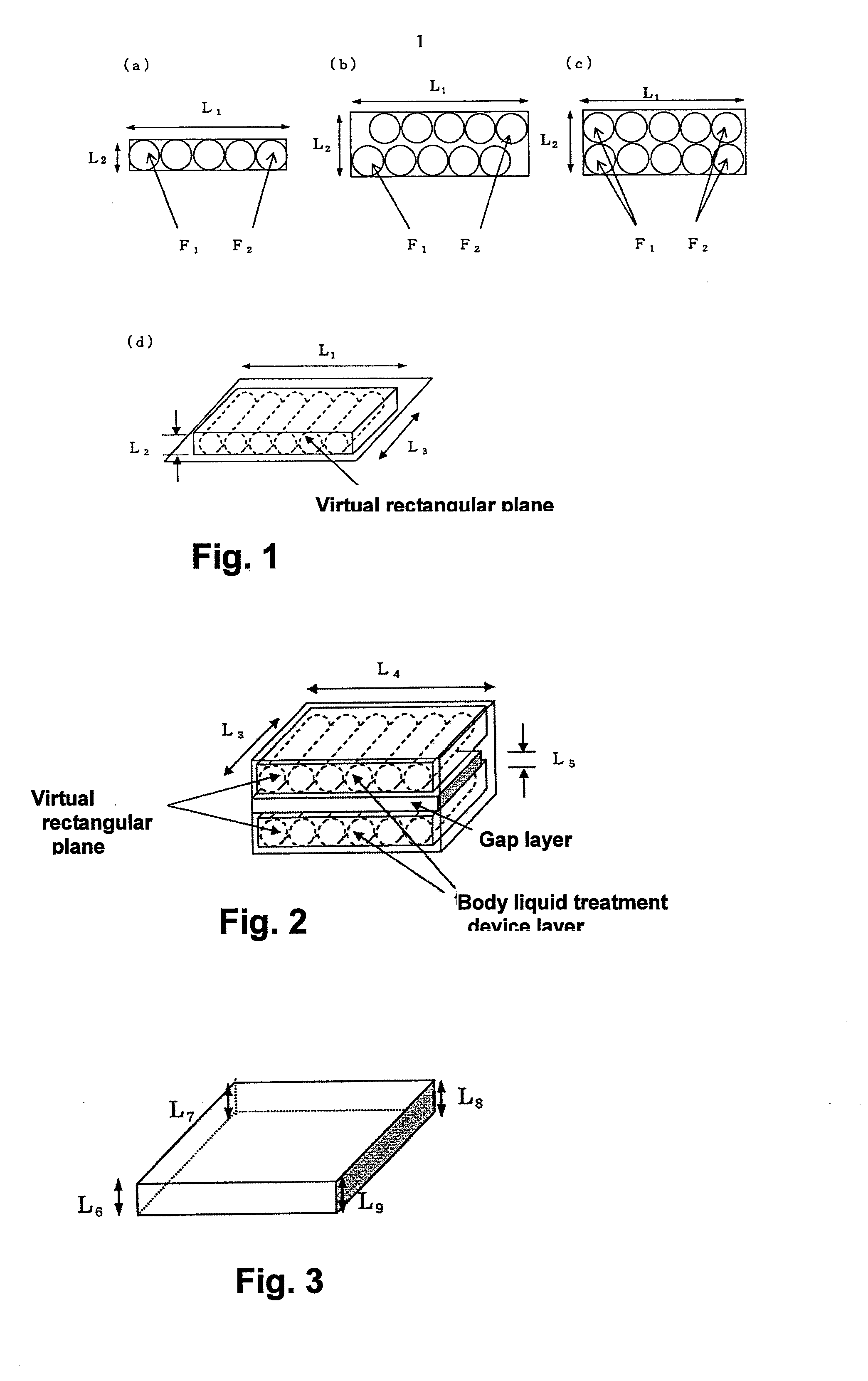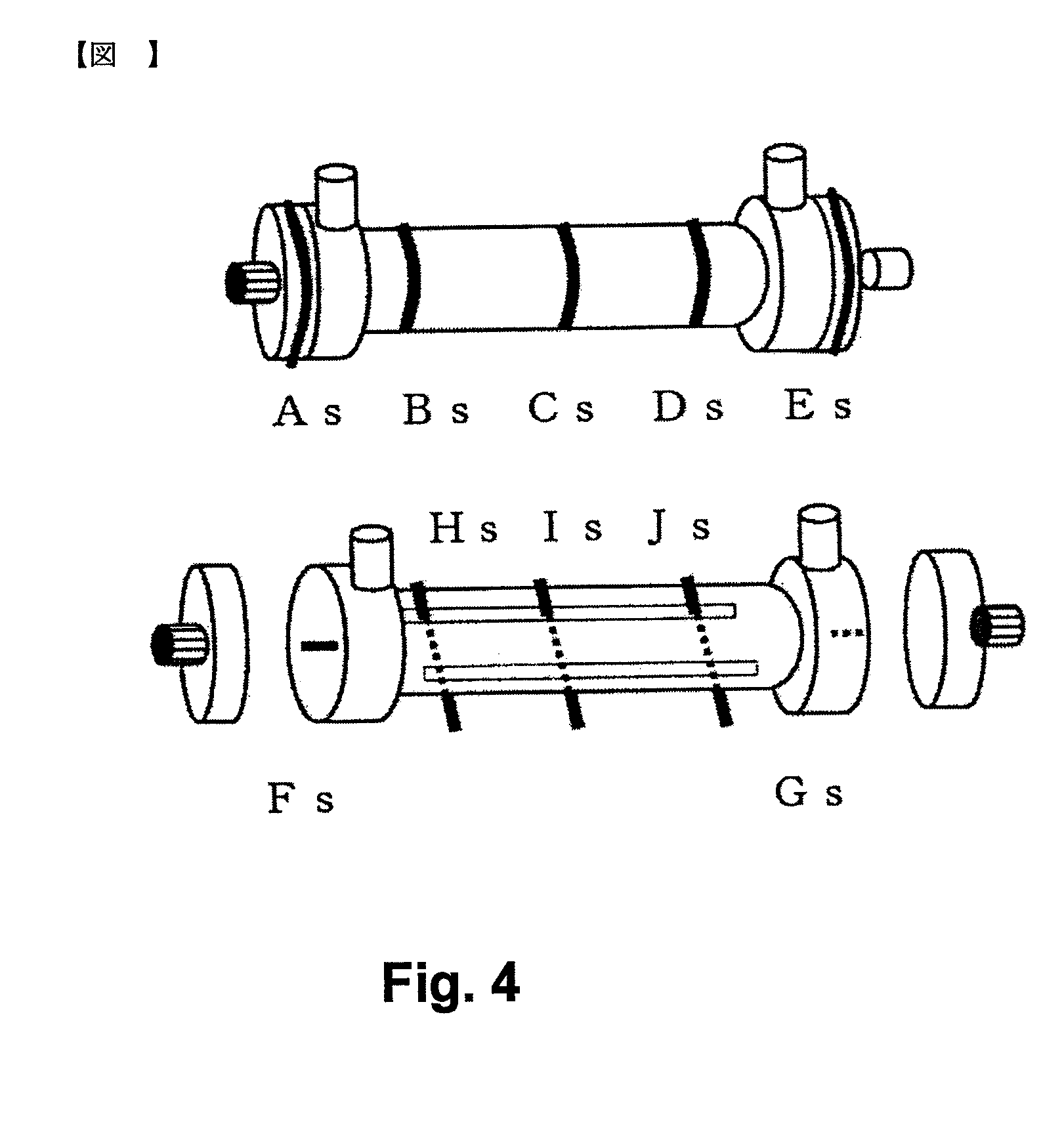Electron beam sterilization method
a technology of electron beam and eluate, which is applied in the direction of bandages, applications, transportation and packaging, etc., can solve the problems of material deterioration and eluate becoming conspicuous, affecting the effect of production efficiency, and reducing productivity, etc., and achieves excellent production efficiency and simple process
- Summary
- Abstract
- Description
- Claims
- Application Information
AI Technical Summary
Benefits of technology
Problems solved by technology
Method used
Image
Examples
example 1
[0189]A bundle of about 16,000 hollow fiber polysulfone-PVP based dialysis membranes were set as a separation material in a cylindrical resin container having two inlet and outlet ports for a fluid in the vicinity of both ends, and the both ends were subjected to potting with a urethane resin. A glycerin aqueous solution was injected from the ends, and a remaining fluid was blown away with compressed air to adjust the liquid adhesion rate of the membranes to 200%. After that, headers having liquid inlet and outlet ports were attached to both ends to obtain a body fluid treatment device. The body fluid treatment device had a whole length of 335.2 mm, a minimum diameter (container body portion) of 46.9 mm, and a maximum diameter (header portion) of 59.0 mm. The body fluid treatment devices were sealed in sterilization bags made of nylon / polyethylene one by one. At this time, as a body fluid treatment device for measuring a dose distribution, a body fluid treatment device illustrated i...
example 2
[0192]A body fluid treatment device of the same size as that in Example 1 was obtained under the same conditions as those in Example 1, except that the liquid adhesion rate was adjusted to 98%. Next, two body fluid treatment device layers were prepared, in which six body fluid treatment devices were arranged at equal intervals and substantially in parallel on a cardboard tray of L13 440 mm×L14 340 mm. Further, one hollow rectangular gap layer made of a cardboard of L15 440 mm×L16 340 mm and having an average gap thickness of L17 60 mm was prepared. The density of the body fluid treatment device layer was 0.121 g / cm3, the density of the gap layer was 0.019 g / cm3, and an average density of the body fluid treatment device was 0.261 g / cm3.
[0193]As illustrated in FIG. 9(b), both surfaces of the gap layer were sandwiched by the two body fluid treatment device layers so as to achieve a zigzag arrangement, to thereby obtain a stack structure, and the stack structure was housed in a cardboar...
example 3
[0195]A body fluid treatment device was obtained under the same conditions as those in Example 1, except that a bundle of about 10,000 hollow fiber polysulfone-PVP based dialysis membranes were set as a separation material, the liquid adhesion rate was adjusted to 79%, and the body fluid treatment device had a whole length of 334.8 mm, a minimum diameter (container body portion) of 37.6 mm, and a maximum diameter (header portion) of 50.2 mm.
[0196]Next, one body fluid treatment device layer was prepared, in which 10 body fluid treatment devices were arranged at equal intervals and substantially in parallel on a cardboard tray of L13 350 mm×L14 320 mm in two rows each having five devices, and one body fluid treatment device layer was prepared, in which five body fluid treatment devices were arranged at equal intervals and substantially in parallel on a cardboard tray of L13 350 mm×L14 320 mm. Further, one hollow rectangular gap layer made of a cardboard of L15 350 mm×L16 320 mm and ha...
PUM
| Property | Measurement | Unit |
|---|---|---|
| density | aaaaa | aaaaa |
| density | aaaaa | aaaaa |
| thickness | aaaaa | aaaaa |
Abstract
Description
Claims
Application Information
 Login to View More
Login to View More - R&D
- Intellectual Property
- Life Sciences
- Materials
- Tech Scout
- Unparalleled Data Quality
- Higher Quality Content
- 60% Fewer Hallucinations
Browse by: Latest US Patents, China's latest patents, Technical Efficacy Thesaurus, Application Domain, Technology Topic, Popular Technical Reports.
© 2025 PatSnap. All rights reserved.Legal|Privacy policy|Modern Slavery Act Transparency Statement|Sitemap|About US| Contact US: help@patsnap.com



